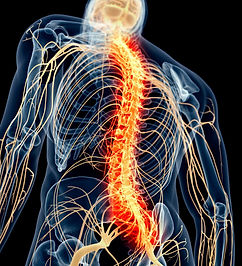What is Vagus Nerve?

The vagus nerve is the longest cranial nerve in the body. It comes from the Latin word, vagus, for “wandering.” That’s because it wanders throughout your body, with wide distribution connecting the brainstem to the body. Only mammals have this nerve.
The vagus nerve serves as the body's superhighway, carrying information between the brain and the internal organs and controlling the body's response in times of rest and relaxation. It helps the immune system and inflammation response to disease. It has four main functions: sensory, special sensory, motor and parasympathetic.
The vagus nerve also manages fears and sends information from the gut to the brain, which is linked to dealing with stress, anxiety, and fear–hence the saying, ‘gut feeling'.
Historical Development of Vagus Nerve Stimulation
Epilepsy has existed in human history with the first record found in a Babylonian text written 4000 years ago, and humanity has sought a cure for this disease for centuries. With the emergence of neurology in the 19th century, the mechanism between the nervous system and epilepsy was tried to be solved and the first vagus nerve stimulation was tried by a New York neurologist in the early 1880s.
Over the next 100 years, the effects of vagus nerve stimulation were first investigated in animal experiments, then in humans, and in 1996, the vagus nerve was surgically implanted into the body and become an invasive stimulation option.
At the beginning of the 2000s, for eliminating the side effects of invasive VNS, scientists tried to find out ways to stimulate the vagus nerve non-invasively, and by 2010 these studies were concluded successfully.
Our first generation device, Nemos, was approved in 2010 for the treatment of epilepsy and depression, and Vitos in 2012 for the treatment of pain and migraine, as the first medically approved non-invasive vagus nerve stimulation treatment in the world. Our 2nd generation device, tVNS-L, has been approved in 2021, and has become a treatment option used in many neurodegenerative diseases.



Vagus Nerve Stimulation Effect Overview
-
Regulation of neurotransmitter release
-
Increase in parasympathetic activity
-
Increase in brain neuroplasticity
-
Reducing inflammation
-
Increasing the secretion of serotonin and increasing the mood
What Are the Effects of Vagus Nerve Stimulation?
_edited_.jpg)
Stimulation of the vagus triggers regulatory mechanisms in the nervous, immune, autonomic, endocrine, cardiorespiratory, and gastrointestinal systems.
Clinical studies on the vagus nerve have shown that the activity in this nerve is closely related to epilepsy, depression, migraine, headache, inflammatory bowel disease, Alzheimer's, arthritis and many other common disorders by activating the parasympathetic nervous system in the brain and increasing the secretion of neurotransmitters in special regions of the brain. shows. Vagus nerve stimulation therapies are approved by FDA in the USA and CE in Europe for use in treatments such as mood improvement, pain relief, sleep improvement, memory enhancement and anxiety reduction. Research continues on the effects of neuroplasticity as well as its cardiac and inflammatory properties.
